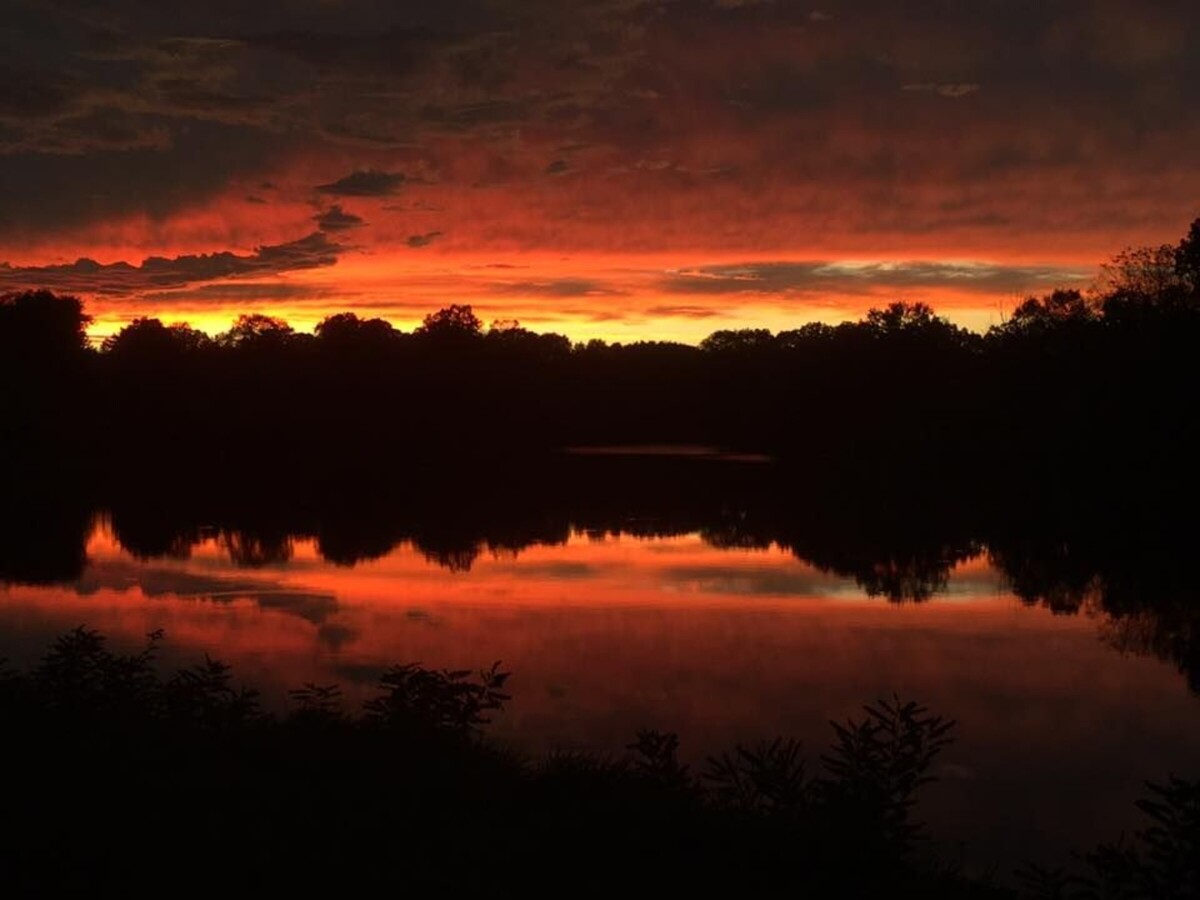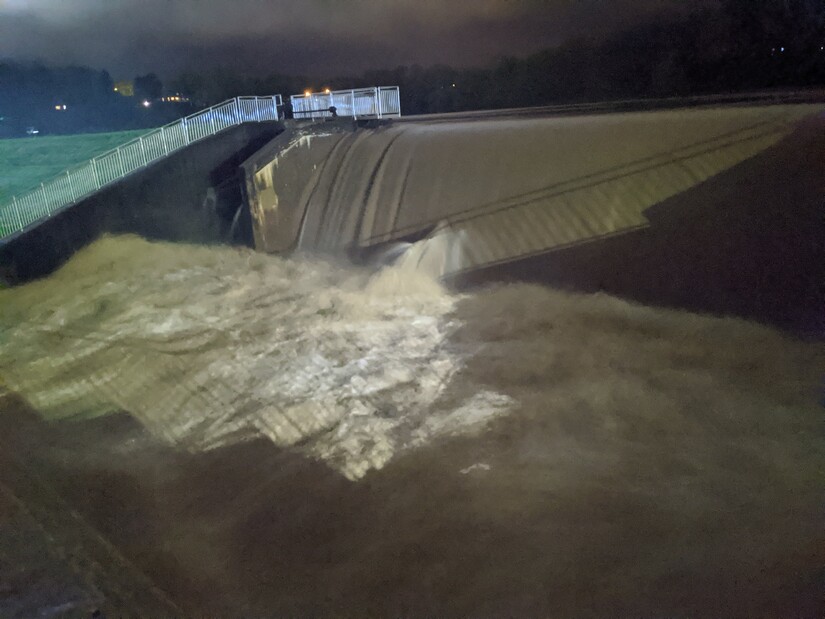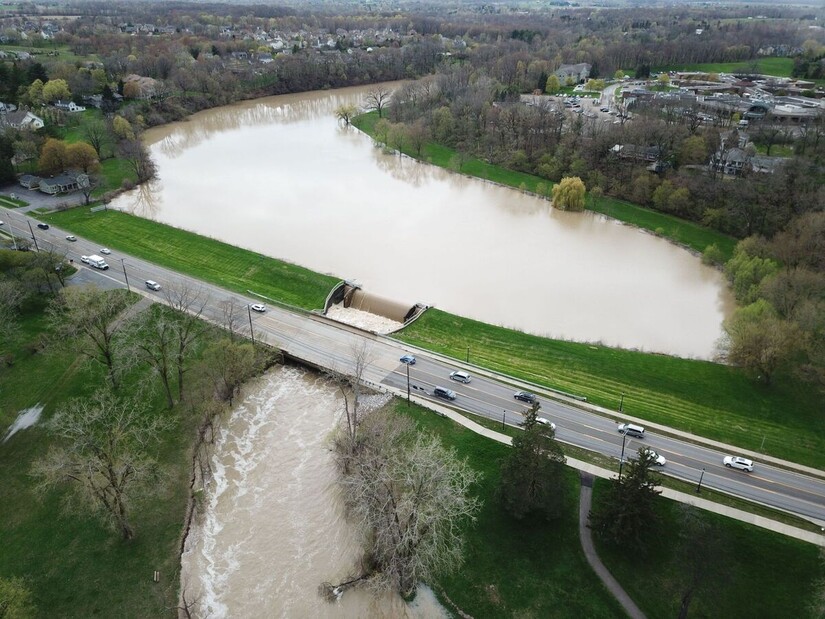Image


Saline City Council is considering pulling the plug on picturesque Mill Pond.
The pond exists because of the dam in the Saline River alongside US-12. The dam, rebuilt in 1974 after failing in 1968, has been a focal point in the city since dam failures caused damaging flooding in the Midland area in May of 2020. Immediately after the failure made national news, city council learned the Mill Pond dam hadn't been inspected in a decade. State regulations call for inspections every three years.
The city paid Spicer Group $3,500 to inspect the dam.
In May, Spicer Group reported the dam was in the kind of shape one might expect, considering its age. The report said the dam met capacity issues for a 200-year storm. On the other hand, there were potentially expensive maintenance issues on the horizon. Due to the high-profile dam failure near Midland, and the trend toward greater rain events, there could be tougher guidelines for dams in Michigan.
Officials were back before council Monday night during council's work meeting. A memo from Spicer Group project manager Kevin Wilks presented three long-term options for council.
Option One
Option one is maintaining the status quo with minor improvements to operations. Improvements include level monitors and telemetry systems to notify the DPW of increased elevations, retrofitting the gate operators with motors, and concrete repairs to intermediate walls. This is the cheapest option, with upfront costs anywhere from $100,000-$500,000.
Option Two
The second option would modify the dam to increase capacity. This could be accomplished by lowering the spillway elevation (estimated cost of $300,000 to $1 million), which would require a change in the legal lake level, or by constructing an additional spillway (cost of $1.5-3 million). Though this option would not change the official dam's official rating as a "significant" hazard, it would reduce the likelihood of a failure that could cause economic and environmental damage.
Option 3
The third option is to remove the dam and restore the Saline River as a meandering stream. Wilks said that in light of recent dam failures, removal of unnecessary dams is favorable where practical. Removing the dam would save the city $1-10,000 a year in maintenance costs, eliminate future costs, eliminate the risk of dam failure and safety and financial risks that would carry and it could improve the health of the Saline River.
The cost could be anywhere from $1-3 million. In addition, people enjoy the pond.
A quick reaction poll in the Saline Posts Facebook group showed 106 were against the idea of removing the dam, 49 people were in favor and 28 people weren't sure.
 Water spills over the dam during a heavy rain event in 2020.
Water spills over the dam during a heavy rain event in 2020.Comments and Questions from Council
Council had questions for city engineer Jeff Fordice and the Spicer Group Engineers. Councillor Dawn Krause asked if the dam served any practical purpose. Fordice said it exists for aesthetic, historical and potential recreational purposes.
Krause asked about the potential for newer and tougher standards, and when those might be implemented. Fordice said a state task force was considering raising standards so that dams would need the capacity to withstand a 1,000-year-flood instead of the 200-year-flood standard currently on the books.
Councillor Kevin Camero-Sulak asked whether the city would be granted time to comply with new rules. Fordice said some dams might continue to operate under grandfathered standards, and that cities would have some time to react to new rules.
Camero-Sulak also asked if the city would save on its insurance bills if it removed the dam. Fordice said he was surprised when the city's insurance provider told him the city would not save money if it removed the dam.
Councillor Jack Ceo asked City Manager Colleen O'Toole if the state would back new, tough standards with funding, or whether it would be another unfunded mandate.
"I think we can safely assume the state will not assume responsibility for the changes," O'Toole said.
Fordice said there's been chatter at state levels that there could be funds associated with dam projects - but he said there "wasn't much in the way of hard money."
Councillor Janet Dillon asked if removing the dam would impact downriver communities.
"It would be pretty minor," Fordice said. "The dam is not designed as a flood-control dam."
Dillon said she was concerned for property owners who lived near the pond.
"What will that do to their property values. I live on the street that borders the river. There will be a lot of confused and unhappy homeowners if we change the lake into a small stream."
She asked if there's been any study of what Mill Pond park would look like if the pond was removed, or what might happen to real estate values if the dam was removed. Fordice said the city hasn't begun investigating those issues.
"We're having this meeting to see if there's any interest in this option at all before investigating that," Fordice said.
Councillor Dean Girbach asked about the potential timetable for removing the dam if council went that route. Shawn Middleton, of Spicer Group, said he expected that would take 3-5 years.
Girbach wondered if council might be able to tie this project to its wastewater treatment plant project in its revolving loan fund application to the state.
Councillor Jim Dell'Orco suggested the city might be more likely to acquire state and federal dollars if it chose to remove the dam. He asked what the city might be able to learn from other communities, like Dexter, that have removed dams. O'Toole said it cost about $1.25 million to remove the dam in Dexter - but that Dexter received help from the DNR, the county road commission, DTE and the Huron River Watershed Council.
Dell'Orco wondered if the city should consider removing the dam now, before it borrows $40+ million to improve a wastewater treatment plant just downstream.
Mayor Brian Marl said in the short term, he thought council should pursue option one - short-term repairs to meet current guidelines. But, he said, "I am of the opinion that as we as a community, look 20 to 30 years out, we owe it to ourselves and our constituents to further evaluate option three, which would be the removal of the dam."
Going around the council table, Marl's short-term proposal seemed to have the support of the council. Dell'Orco, however, expressed some urgency to remove the dam.
"I can get on board with executing option one with an eye toward option three in the very near future," Dell'Orco said.
